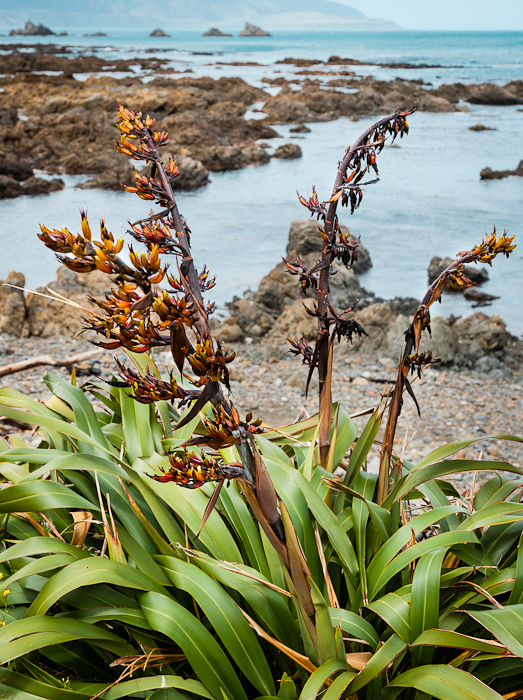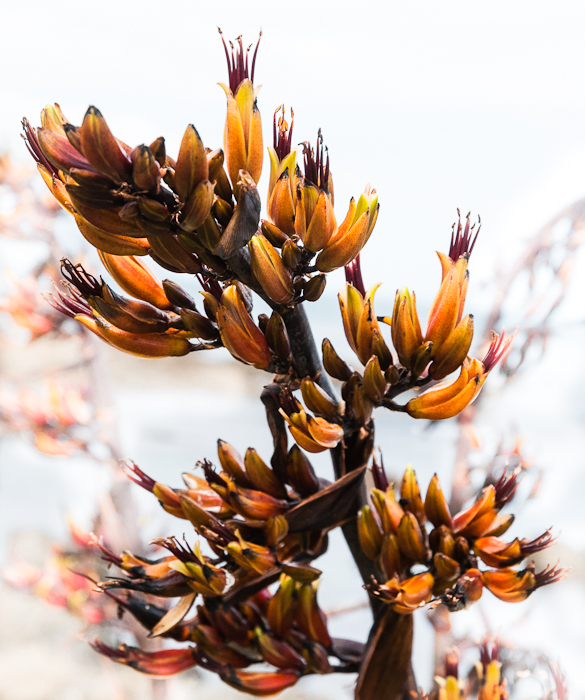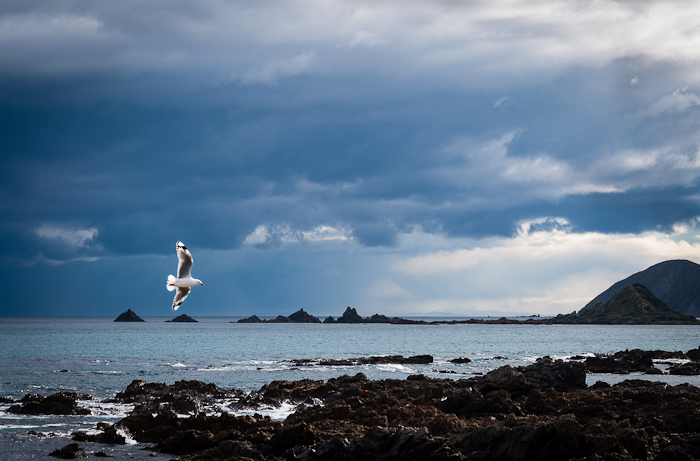A plant used as a symbol of New Zealand, almost as often as the silver fern, is the NZ flax or Phormium. It has long sword-shaped leaves and upright flowering spikes and when not battered by the elements can have an imposing "architectural" presence. Many garden cultivars have been bred with different leaf colouration and currently it is in fashion in Northern Hemisphere horticulture, particularly in England it seems. There are swathes of flax plants along the steep hillsides bordering Wellington's south coast, and it also grows right down on the rocky shore.

Around the Cook Strait the plants are generally Phormium colensoi, or wharariki. It is tough and resilient, and now in flower. It is not related to the flax of the Northern Hemisphere, although it is also a source of fibre. In fact it is a member of the lily family. What the flowers lack in size, they make up for in number - flowers cluster along branchlets up tall flowering spikes. They provide nectar, particularly enjoyed by the tui. Alas, the one I saw feeding on the flax today was not interested in having its portrait taken, so I made a flower portrait instead...a rather more cooperative subject.
























